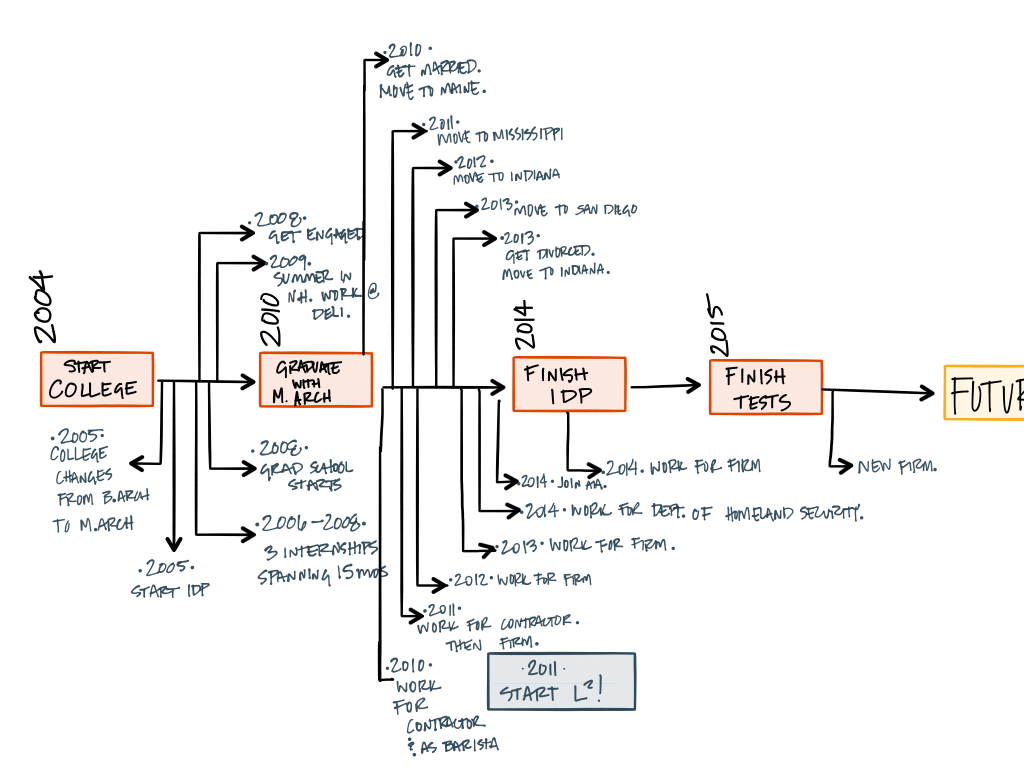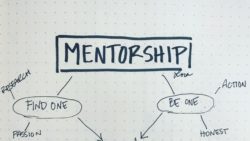ARE Questions: the Path to Licensure
I’ve been thinking about writing this blog for awhile. And then…life…and uncertainty. We’ll get to that last one in a bit, but the life thing – it’s no joke. I remember talking with a friend about, “I don’t know what I’ll do with all of this time when I’m not having to study anymore!” and she laughed and gave me a knowing smile that I now recognize as, “Don’t you worry. It will get filled before you know it.” The complete black hole of time that it takes to study and work to pass the ARE (Architect’s Registration Exam) is not something easy to come by. You don’t have extra time created for you in the day, and sometimes “life” happens. The “life” thing that has prevented me from sitting down to write this blog is also what delays or prevents others from taking their exams on their path to licensure. I’m not saying it’s right or wrong, it just happens. It’s priorities. We talked about them last week. Life will always be there to get in the way and provide you with options, it’s up to you where you put your time. And if getting licensed is important to you, you’ll find the time. This blog is not about helping you find time, it’s about the process and realizing you aren’t alone.
And that’s where uncertainty comes in. I think I mulled over writing these blogs for so long because I was torn between the swings of “what makes what I have to say important?” and “there are so many other people writing about the process right now, how am I different? (revert to #1)” Throughout the entire process, and life in general, it is easy to feel uncertain as to how or whether this path you’ve chosen will pan out. You see a pass rate of 65% on each of the 7 sections and think, “man, those odds stink.” You get a fail letter in your email inbox and wonder, “is this how I should be spending my time and money?” You leave a testing center and feel as though someone just took a shotgun to your cerebellum and contemplate whether puking and crying at the same time is possible. You will have each of those thoughts throughout your path to licensure. If you don’t have each of them, please check your pulse. You are either dead or a robot. I had every single one of them, the last one more than once. That uncertainty is a part of life; it’s what you do with it that matters. Stepping through uncertainty and letting it make you stronger, by learning from your mistakes or simply realizing you do, in fact, have something to offer the world, is what separates you as an Architect from someone who attended architecture school. Being vulnerable to screwing up is hard. But think of what happens if you don’t even try.
So let’s talk logistics for a minute. For reference, this is what my path to licensure looked like. Refer to it as needed.
There’s a lot of life and uncertainty in there, isn’t there? A couple cross-country moves, lots of life trials, never a steady job, lots of questions… But I had a plan of the path, had researched the resources, and had a vast amount of innate stubbornness and will to persevere and see my dreams through. Let’s tackle the path to licensure. Although it varies, as you see mine did, the main components are the same.
The required path:
The typical path to licensure means you have to check 3 boxes: Graduate from an accredited program + complete IDP + take (and pass) all of your tests.
An accredited program can be either a B.Arch (5yrs) or an undergrad with various forms of M.Arch (4+2/3). As you can see from my diagram, this second option came into play while I was in college and my school chose to shift. The legalities of it are not up for debate or discussion, this is one of those “life happens” moments. I started in a 5yr B.Arch track and ended up in a 4+2 M.Arch track. There are schools that offer one, the other, or both. There may be schools that still choose to switch while you’re in school. Just keep at it.
IDP (Intern Development Program) – soon to be AXP (Architecture Experience Program) is built to help you make sure you’re getting the required professional practice experience to become a competent licensed architect. It tracks a specific amount of hours in specific areas of practice to make sure you’re well-rounded…and you can begin logging those hours as soon as you graduate from high school. There are positives and pitfalls to this program, but if you use it as a guide to focus on subjects within the practice to make sure you learn (or at least roughly know about) them, you’ll have accomplished the intent. The important takeaway in this is that, like most pieces of your career, it is what you make of it. You can get pigeon-holed in a firm (size doesn’t matter on this one) doing the same thing over and over again and not cover all of the subjects you need. That firm may even be lazy or selfish enough to not care that you aren’t hitting all of the required subjects (exception: sometimes internships are just too short) and lets you fake numbers. Realize that 1) you are only hurting yourself and 2) that firm is showing their hand early that they don’t care about developing you to become a part of the team. More than any hours you log during your internships, you need to care about the experiences you have and the people you build relationships with. If you’re lucky, you find a firm along the way that will welcome you back after graduation as an employee (and that you want to go back to) because you’ve invested in each other. If you’re just logging hours, and your employer is letting you get by with the minimum, then you’re not helping yourself prepare for your test or professional life in general.
Passing the tests is the last and most important step in the process. Granted, there are now ways where you could be taking them while in grad school and technically pass all of them and still have IDP left to do, so “last” is not technical, but you know what I mean. For the average aspiring architect, it is the last step in the process. As it stands, there are 7 tests. ARE 5.0 launches Dec 2016, but if you’re prepared to start taking your tests now, don’t wait just because of that. 1) you will be one of the first people taking the new test style 2) you’ve delayed being licensed just to take one or two less tests 3) most of the study resources currently revolve around the current tests, not the new ones (see #1). Point being: they’re tests. The tests are typically the last barrier and hopefully your school, work, and life experiences to date have put you in a place to pass them (along with substantial amounts of studying). I will be the first to admit there are questions that you will *never* experience in real life, but just get past it and realize it’s a test you have to pass.
On part 2 of the series, I’ll cover resources for passing the ARE, some of which are newly released resources by friends!
Until next time,







